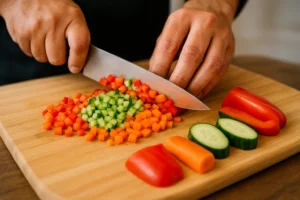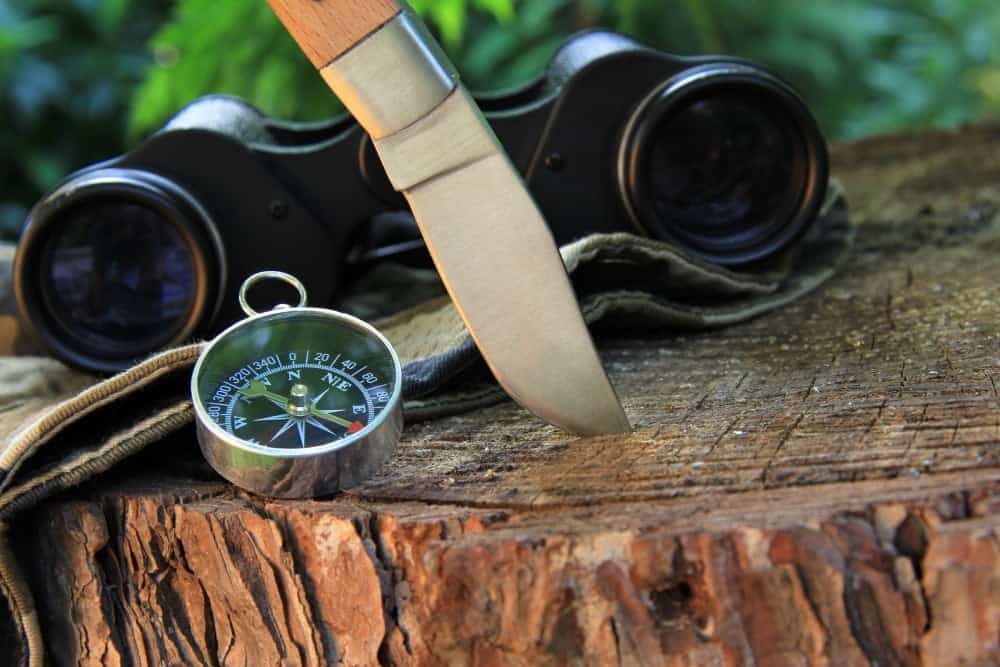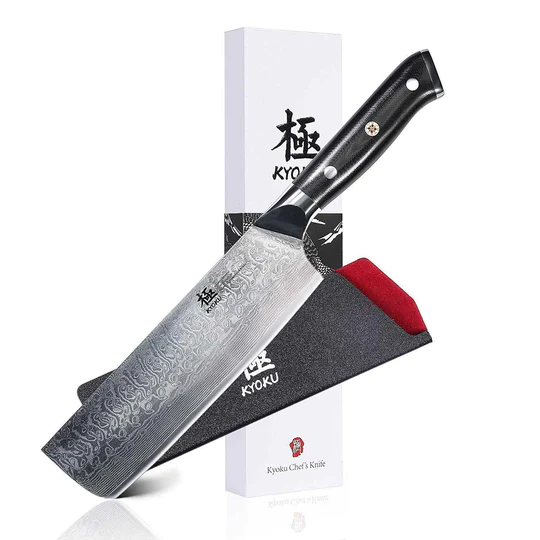


In the wild, your knife is more than just a tool—it’s an extension of your own body, a faithful companion that can determine your fate in the face of adversity. Whether you’re a seasoned adventurer, or a weekend warrior, a good survival knife is essential for tackling the challenges that Mother Nature throws your way.
But with countless options on the market, how do you choose the one that’s perfect for your unique needs? Fear not! In this comprehensive guide, we’ll cut through the clutter and delve into the features, materials, and designs that will ensure your survival knife is the ultimate ally in your outdoor pursuits.

Survival knives are enduringly popular due to the myriad of activities that they can be used for. These include:
Survival situations can vary greatly, and having the right knife for the specific scenario can make a significant difference. Here are some different knives suited for various survival situations.
For most outdoor enthusiasts, a versatile and sturdy knife with a 4-6 inch blade, full tang construction, and a drop point or clip point blade is ideal. This type of survival knife can handle various tasks, such as cutting, carving, preparing food, and even self-defense.
If your primary focus is on wilderness living skills like woodworking, carving, and shelter building, a bushcraft knife is the right choice. These knives usually have a Scandi grind, which provides excellent control and precision for woodworking tasks.
For those who require a knife for self-defense or tactical situations, a tactical knife is designed with these purposes in mind. These knives often have a tanto blade, serrated edges, and a glass breaker pommel for added functionality.
A hunting knife is designed for processing game and features a curved blade for skinning and gutting. The drop point or trailing point blade shapes are common in hunting knives, providing better control and precision during field dressing.
While not ideal as a primary survival knife, a folding knife can be a useful backup or everyday carry option. These knives are compact and lightweight, making them easy to carry and store when not in use.
In dense, tropical environments where you need to clear vegetation, a machete or parang can be indispensable. These large knives have long, curved blades designed for efficient chopping and slashing.
A neck knife is a small, lightweight fixed-blade knife worn around the neck. While not as versatile as a larger survival knife, it can be a handy tool for quick and easy access in certain situations.
For water-based survival situations, a corrosion-resistant dive knife made from titanium or specialized stainless steel is essential. These knives are designed for use underwater and typically feature blunt tips and serrated edges for cutting through ropes or fishing nets.
By understanding the demands of different survival situations, you can select the most suitable knife for your needs. It’s essential to have the right tool at your disposal to ensure you’re well-equipped to tackle the challenges that Mother Nature throws your way.
A good survival knife is more than just a sharp blade; it should possess a range of features that make it versatile, durable, and reliable in various situations.
A full tang means that the blade and handle are made from a single piece of metal, providing strength and durability at the same time. This design ensures that the knife won’t break easily under stress, making it ideal for heavy-duty tasks like prying and chopping.
High-quality stainless steel or carbon steel are the most common materials used for survival knives. Stainless steel is known for its corrosion resistance and low maintenance, while carbon steel offers better edge retention and easier sharpening.
Both materials have their pros and cons, so choose based on your personal preferences and intended use. In some cases, if you’re an enthusiast then pattern welded steel can also make an excellent choice.
A good survival knife should have a blade length between 4 to 6 inches. This sized blade offers a balance between versatility and control, allowing you to perform various tasks with ease, from slicing and cutting to carving and even self-defense.
A blade thickness between 3/16 to 1/4 inch is ideal for a survival knife. This provides enough strength for heavy-duty tasks without making the knife too heavy or cumbersome.
A versatile blade shape, such as a drop point or a clip point, is preferred for survival knives. These shapes offer a good balance between slicing, piercing, and chopping capabilities.
Look for a handle made from durable materials like G-10, Micarta, or Kraton, which provide excellent grip even in wet conditions. The handle should also be comfortable and ergonomic, ensuring that you can use the knife for extended periods without discomfort.
A sturdy, flat pommel (the end of the handle) can be useful for hammering or striking tasks in a survival situation. It adds versatility to your knife, making it a more valuable tool in the wilderness.
The two most popular types of steel for survival knives are stainless steel and carbon steel. Each offers unique advantages and disadvantages, so it really depends on personal preference.
Stainless steel is known for its corrosion resistance, making it ideal for those who plan to use their knives in wet or humid environments. This low-maintenance material requires less frequent care, allowing you to focus on the task at hand.
However, stainless steel may not hold an edge as well as its carbon steel counterpart, which can result in more frequent sharpening.
On the other hand, carbon steel boasts superior edge retention and is generally easier to sharpen. This makes it a good option for those who prioritize cutting performance and require a consistently sharp blade.
Despite its benefits, carbon steel is more susceptible to rust and corrosion, necessitating regular cleaning and oiling to maintain its integrity.
In summary, stainless steel is an excellent choice if you don’t want to maintain your knife too much, while carbon steel although requires more maintenance, is better in terms of sharpness when compared to stainless steel.

Any survival expert will tell you that taking care of your survival knife is one of the most important things you can do to ensure that it’s in optimum condition when you need it. The following will help to prolong the life of your knife as well as making sure that it works as effectively as possible.

You should get into the habit of cleaning and re-sheathing your knife after every use to prevent rust and build up. Use a little soap and water to clean the blade and dry thoroughly before placing it back into the sheath.
If the blade of your knife is stainless steel, avoid, where possible, touching the blade with your fingers as oil from your fingertips can cause corrosion. And never, under any circumstances, use abrasives to clean your knife as this can cause irreparable damage.
Keep your knife blade oiled to reduce rust and prolong its life. Take care to avoid oil landing on the knife handle because the knife could slip out of your hand.
A good quality survival knife can, quite literally, save your life. For this reason, your knife should always be treated with respect and should be cared for and stored correctly in order to make it last longer.
When not in use, your knife should be stored in a secure, dry place away from moisture or humidity. Avoid storing the knife in its sheath for long periods of time as leather attracts moisture which could damage the knife.
There are a range of knife storage options including magnetic knife holders, folding knife cases, knife display cases, and drawer storage.
New knives be sharp right out of the box and then easy to maintain. Regular sharpening will keep your knife in peak condition and ready for any task that comes your way.
Keeping your survival knife sharp not only makes it more effective but also safer to use. If you are using your knife on a regular basis, it’s a good idea to invest in a professional sharpener for use at home. If you need to sharpen your survival knife while outdoors, carry a sharpening stone with you.
A ceramic sharpener is a small tool that can be easily transported in a pocket or a bag and is really easy to use. All you need to do is draw the knife through the rods on the tool in order to sharpen both edges simultaneously.
If you’re using a stone to sharpen your knife, these should be soaked or lubricated beforehand. To sharpen your knife, glide the blade up and down using a circular motion. For larger and curved blades, this should be combined with an ‘up and across’ motion. It should take around 12 rotations to successfully sharpen your knife.
You can tell that the knife is being sharpened by the accumulation of metal shavings around the blade. After sharpening the front of the blade, use the same motion to sharpen the back of the blade as well. Always make sure that you wipe off any metal shavings and dispose of these safely.
Once finished, test the knife sharpness by holding up a piece of paper. If the knife easily slices down the middle of the paper, it’s sharp enough. If not, you may need more sharpening.
Choosing the right survival knife is crucial for any outdoor or survival enthusiast.
The selection process is far from random. It requires careful consideration and understanding of what each knife offers. Determining your specific needs and applications is the first step toward making the right choice.

Knife Buzz offers independent product reviews on a wide range of knives used in the kitchen, home, and outdoors. We make it easy for you to find the right knife at the best price.

Knife Buzz offers independent product reviews on a wide range of knives used in the kitchen, home, outdoors and at work.
The Knife Buzz Team are passionate about reviewing knives and we cater to a targeted audience that needs independent advice before purchasing.
KnifeBuzz.com may earn affiliate commissions on some pages of this website. Knife Buzz is a participant in the Amazon Services LLC Associates Program, an affiliate advertising program designed to provide a means for sites to earn advertising fees by advertising and linking to Amazon.com. Amazon and the Amazon logo are trademarks of Amazon.com, Inc, or its affiliates. When you click links to various merchants on this site and make a purchase, this can result in this site earning a commission. Other affiliate programs and affiliations include, but are not limited to, Google AdSense.